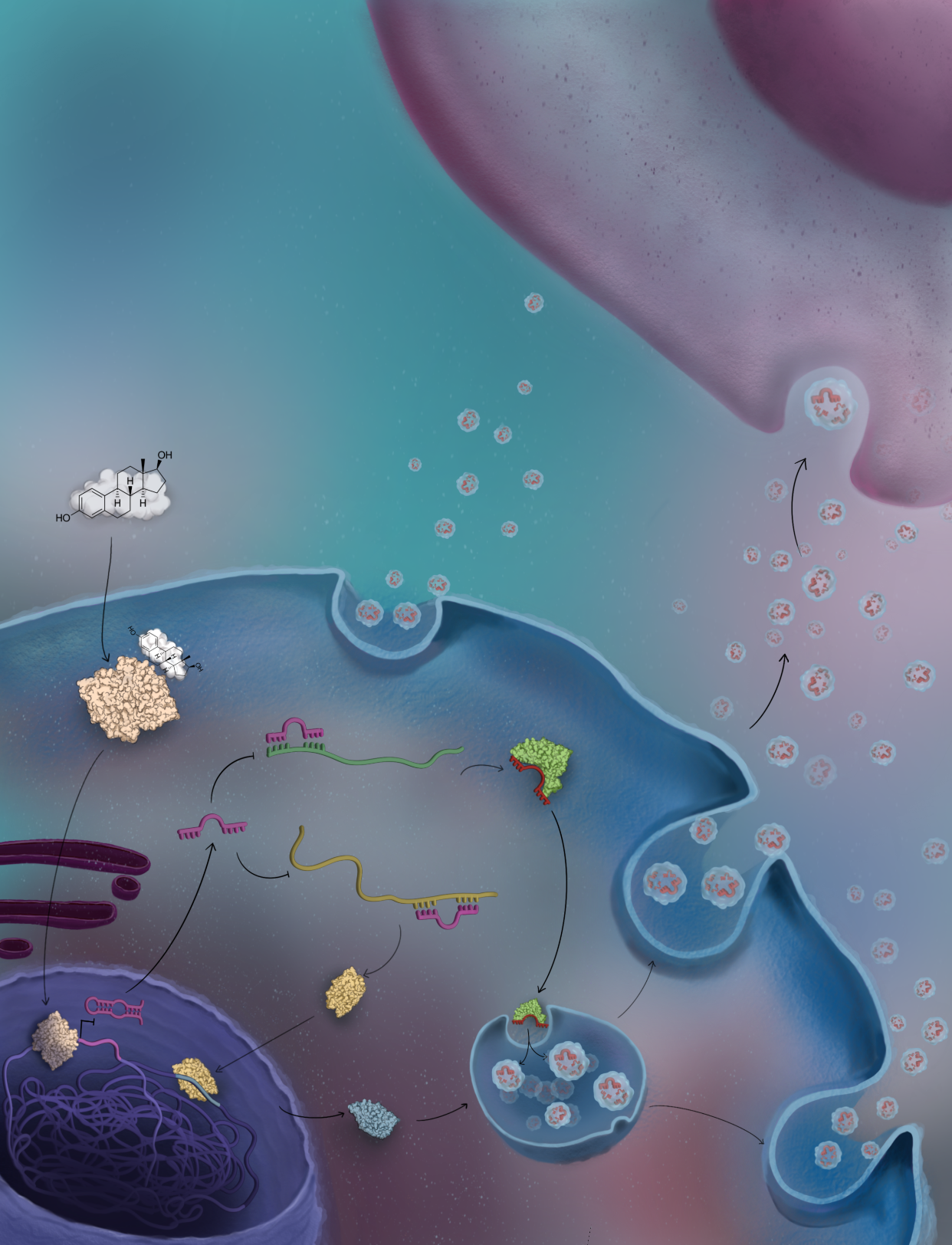In uno studio recentemente pubblicato sulla rivista PNAS, che vede come coautori ricercatori di IIGM, si descrive un nuovo meccanismo che collega gli estrogeni e le vescicole extracellulari (EVs) nel tumore della mammella.
The effects of hormones on the production and loading of extracellular vesicles (EVs) are still unknown. In the work “17β-estradiol promotes extracellular vesicle release and selective miRNA loading in ERα-positive breast cancer” published in the Proceedings of the National Academy of Sciences (PNAS), having Dr. Pardini as co-author, is reported a new mechanism linking estrogens and EVs in breast cancer: estradiol, the most common female hormone, increases the production of EVs in estrogen sensitive (ER+) breast cancer cells in a dose-dependent matter enriching these vesicles in specific microRNAs for macrophage activation. These effects were also identified in blood-derived EVs of ER+ breast cancer patients stratified by menopausal status and body mass index. These results can be used for the development of biomarkers for breast cancer risk stratification. In this work, we propose a unique mechanism whereby estrogens promote the export of tumor-suppressing microRNAs from ER+ tumor cells, with possible implications in the tumor microenvironment. These results can be further exploited therapeutically to improve the survival of patients with ER+ breast cancer.
The IIGM’s researcher Barbara Pardini had the opportunity to work for 6 months in Houston in the Prof. George Calin laboratory at the MD Anderson Cancer Center in Houston (TX, USA) thanks to a Fulbright research Scholarship. During her stay in the USA, she worked at an exciting project on the effect of hormones in EV release in breast cancer, the results of which were published in the article cited above.
